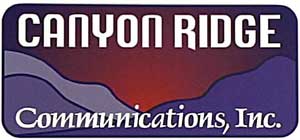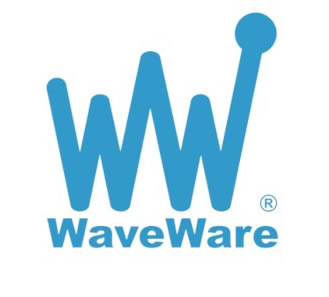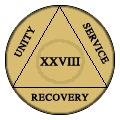Selected portions of the BloostonLaw Telecom Update, and/or the BloostonLaw Private Users Update — newsletters from the Law Offices of Blooston, Mordkofsky, Dickens, Duffy & Prendergast, LLP — are reproduced in this section with the firm’s permission.
| BloostonLaw Telecom Update | Vol. 18, No. 35 | September 9, 2015 |
Headlines
Comment Deadline on 11th Broadband Progress Notice of Inquiry Extended Last month, the FCC extended the comment deadline for its 11 th Broadband Progress Notice of Inquiry (NOI). Comments are now due September 15, and reply comments are due September 30. The NOI, released at the beginning of August, seeks comment on whether the term “advanced telecommunications capability” should be defined to account for consumer needs and features associated with mobile broadband service and, if so, whether “advanced telecommunications capability” should be deemed to include consumer access to both fixed and mobile broadband service. According to the FCC, a number of factors appear to indicate that “mobile and fixed broadband appear to be different services in a number of respects under current technological and economic conditions, and that each currently appears best suited to serve different consumer needs.” The FCC also proposes to retain the speed benchmark of 25 Mbps download/3 Mbps upload applied to fixed terrestrial services in the 2015 Broadband Progress Report, and seeks comment on applying this speed benchmark to fixed satellite services. The FCC also seeks comment on a lower speed benchmark for mobile broadband service, particularly in the event that it finds that “advanced telecommunications capability” includes access to both fixed and mobile broadband service. Oppositions Due September 17 to Petitions for Reconsideration of Lifeline Order On September 2, the FCC published notice of two Petitions for Reconsideration of its Lifeline Order on Reconsideration and Second Report and Order that were originally filed on August 13. Oppositions to the Petitions are due September 17, and replies are due September 28. In one petition, CTIA – The Wireless Association seeks reconsideration of the FCC’s conclusion that Sections 222(a) and 201(b) of the Communications Act impose a duty on carriers to protect and secure all data obtained while verifying the eligibility of potential Lifeline subscribers, including data beyond CPNI. However, according to CTIA, “Congress gave the Commission no authority to impose customer data security regulations other than with respect to CPNI, and neither Section 222(a) nor Section 201(b) gives the Commission authority to impose customer data security requirements of any kind.” In the other petition, filed by a group of wireless ETCs, petitioners seek reconsideration of the method by which the FCC established a uniform snapshot date for Lifeline reimbursements going forward because “the revised rule as written would result in many situations where eligible telecommunications carriers (ETCs) provide Lifeline benefits to eligible low-income consumers without receiving reimbursement for such services.” These petitioners note, however that they are not opposed to the establishment of a snapshot itself. FCC Issues NPRM on Retransmission Consent On September 2, the FCC issued a Notice of Proposed Rulemaking on the “totality of the circumstances” test used in evaluating whether broadcast stations and multichannel video programming distributors are negotiating for retransmission consent in good faith. Comments will be due 60 days after publication of the NPRM in the Federal Register, and reply comments will be due another 30 days after that. In the NPRM, the FCC seeks comment on whether it should make any updates to the “totality of the circumstances” test itself to ensure that the conduct of broadcasters and MVPDs during negotiations for retransmission consent, and after such negotiations have broken down, meet the good faith standard. The FCC also seeks comment on whether there are specific practices that it should identify as evidencing bad faith under the totality of the circumstances test. U.S. Chamber of Commerce Joins List of TCPA Order Challengers On September 2, the U.S. Chamber of Commerce filed a petition for review in the U.S. Court of Appeals for the D.C. Circuit challenging several aspects of the TCPA Omnibus Declaratory Ruling and Order issued by the FCC which, according to the Chamber, “will accelerate abusive class action lawsuits against businesses under the Telephone Consumer Protection Act.” Similar to previously reported petitions, the Chamber argues that the Order: - improperly expands the scope of the TCPA by including calls to wireless numbers made from equipment that is not currently able "to store or produce telephone numbers to be called, using a random or sequential number generator:' and “to dial such numbers;”
- improperly defines the term “called party” for purposes of the TCPA's prior express consent provisions as the "current subscriber (or non-subscriber customary user of the phone),” rather than the intended recipient of a call;
- gives a caller only one call before imposing strict liability for calls made to numbers that, without the caller's knowledge, have been reassigned from a person who previously gave express consent--even if that one call goes unanswered; and
- improperly limits the TCPA’s consent defense by providing that “a called party may revoke consent at any time and through any reasonable means" and affirmatively prohibits a caller from limiting the manner in which revocation may occur.”
According to the Chamber: The Declaratory Ruling and Order's new, over-broad, and atextual interpretations of the TCPA will expose legitimate businesses across the country of all sizes and types-to liability for simply attempting in good faith to communicate with customers who previously provided valid consent to be contacted. Furthermore, the Declaratory Ruling could tum even a mass-market smartphone into a covered "autodialer," and threatens to create an utterly unworkable regime for the logistics of receiving and processing consent revocation. Law & Regulation
FCC Sets Regulatory Fee Deadline for Thursday, September 24, 2015The FCC has recently released its Report and Order establishing the regulatory fees for Fiscal Year 2015. These fees are designed to recover its $339.844 million appropriation from Congress. The deadline for payment of the regulatory fees is Thursday, September 24, 2015. Starting this year, the FCC has made changes that a few changes that will be of interest to our clients. Notable among these changes are: (a) the increase of the de minimis exemption for the payment of regulatory fees from $10.00 to $500.00, (b) the establishment of a regulatory fee for 800 toll free numbers and (c) provided a fee for Direct Broadcast Satellite (DBS) as a subcategory of the cable television and Internet Protocol Television (IPTV) regulatory fee category. The FCC has also eliminated regulatory fees for the 218-219 MHz Service, the Broadcast Auxiliary Service and Satellite Television construction permits. It is critically important that our clients meet the September 24, 2015 regulatory fee payment deadline. In addition to the 25 percent late fee and additional administrative fees, the FCC has also indicated that it will place regulatees that fail to make their regulatory fee payments in a timely manner in a “Red Light Status,” which will delay the receipt of any USF payments as well as delay the processing of any FCC applications or petitions. Should a fee remain unpaid long enough, the FCC could also take action dismiss applications and potentially revoke any FCC authorizations held by the regulatee. In this regard, if you are exempt from the payment of regulatory fees – either because of your status as a non-profit or governmental entity or because the sum of your total regulatory fees would be less than $500.00, we recommend that a letter be prepared and filed with the FCC so that the FCC is aware of your exempt status and is less likely mistakenly place you in a red-light status. Further information regarding the payment regulatory fees will be coming out in targeted memos to our clients. FCC Revises Cable Market Modification Rules On September 2 the FCC issued a Report and Order adopting rules implementing Section 102 of the Satellite Television Extension and Localism Act Reauthorization Act of 2014 (“STELAR”) to promote carriage of in-state and other relevant local television programming. The STELAR amended the Communications Act and the Copyright Act to give the FCC authority to modify a commercial television broadcast station’s local television market for purposes of satellite carriage rights. Previously the FCC could only modify markets only in the cable carriage context. Specifically, the Order revises the current cable market modification rule, Section 76.59, to apply also to satellite carriage, while adding provisions to the rules to “address the unique nature of satellite television service.” The Order also makes conforming and other minor changes to the cable market modification rules. Industry
Warrants Now Required to Track Cellphone Locations On September 3, the U.S. Department of Justice announced the implementation of a new policy requiring law enforcement agencies to obtain a search warrant, supported by probable cause and issued pursuant to the Federal Rules of Criminal Procedure, before using cell-site simulator technology to track cell phone locations. Cell-site simulation technology functions by transmitting as a cell tower. In response to the signals emitted by the simulator, cellular devices in the proximity of the device identify the simulator as the most attractive cell tower in the area and thus transmit signals to the simulator that identify the device in the same way that they would with a networked tower. A cell-site simulator receives and uses an industry standard unique identifying number assigned by a device manufacturer or cellular network provider. When used to locate a known cellular device, a cell-site simulator initially receives the unique identifying number from multiple devices in the vicinity of the simulator. Once the cell-site simulator identifies the specific cellular device for which it is looking, it will obtain the signaling information relating only to that particular phone. When used to identify an unknown device, the cell-site simulator obtains signaling information from non-target devices in the target's vicinity for the limited purpose of distinguishing the target device. There are two circumstances in which a warrant is not required: exigent circumstances under the Fourth Amendment (such as the need to protect human life or avert serious injury; the prevention of the imminent destruction of evidence; the hot pursuit of a fleeing felon; or the prevention of escape by a suspect or convicted fugitive from justice), and exceptional circumstances in which obtaining a warrant is impracticable. Deadlines
SEPTEMBER 30: FCC FORM 396-C, MVPD EEO PROGRAM REPORTING FORM. Each year on September 30, multi-channel video program distributors (“MVPDs”) must file with the Commission an FCC Form 396-C, Multi-Channel Video Programming Distributor EEO Program Annual Report, for employment units with six or more full-time employees. Users must access the FCC’s electronic filing system via the Internet in order to submit the form; it will not be accepted if filed on paper unless accompanied by an appropriate request for waiver of the electronic filing requirement. Certain MVPDs also will be required to complete portions of the Supplemental Investigation Sheet (“SIS”) located at the end of the Form. These MVPDs are specifically identified in a Public Notice each year by the FCC. OCTOBER 15: INITIAL 911 RELIABILITY CERTIFICATION. The Commission’s rules require Covered 911 Service Providers to take “reasonable measures” to provide reliable service with respect to 911 circuit diversity, central office backup power, and diverse network monitoring, as evidenced by an annual certification of compliance with specified best practices or reasonable alternative measures. The Initial Reliability Certification requires covered providers to demonstrate “substantial progress” toward meeting the requirements of the full Annual Reliability Certification, which is defined as compliance with standards of the full certification in at least 50 percent of the Covered 911 Service Provider’s critical 911 circuits, central offices that directly serve public safety answering points (PSAPs), and independently monitored 911 service areas. NOVEMBER 1: FCC FORM 499-Q, TELECOMMUNICATIONS REPORTING WORKSHEET. All telecommunications common carriers that expect to contribute more than $10,000 to federal Universal Service Fund (USF) support mechanisms must file this quarterly form. The FCC has modified this form in light of its decision to establish interim measures for USF contribution assessments. The form contains revenue information from the prior quarter plus projections for the next quarter. Form 499-Q relates only to USF contributions. It does not relate to the cost recovery mechanisms for the Telecommunications Relay Service (TRS) Fund, the North American Numbering Plan Administration (NANPA), and the shared costs of local number portability (LNP), which are covered in the annual Form 499-A that is due April 1. Calendar At-a-Glance
September
Sep. 9 – Reply comments are due on Transparency Exemption proceeding.
Sep. 15 – Reply comments on Lifeline Further Notice of Proposed Rulemaking are due.
Sep. 15 – Comments are due on 11 th Broadband Progress Notice of Inquiry.
Sep. 17 – Oppositions to Petitions for Reconsideration of Lifeline Order are due.
Sep. 21 – Reply comments are due on Video Programming Competition report.
Sep. 24 – Regulatory fees are due.
Sep. 25 – Comments are due on Section IV.B of the Special Access Data NPRM.
Sep. 28 – Replies to oppositions to Petitions for Reconsideration of Lifeline Order are due.
Sep. 30 – Reply comments are due on 11 th Broadband Progress Notice of Inquiry.
Sep. 30 – FCC Form 396-C (MVPD EEO Program Annual Report). October
Oct. 15 – 911 Reliability Certification.
Oct. 30 – PRA Comments on the 2015 Lifeline Second Reform Order are due. November
Nov. 1 – FCC Form 499-Q (Quarterly Telecommunications Reporting Worksheet) is due. | 




































































